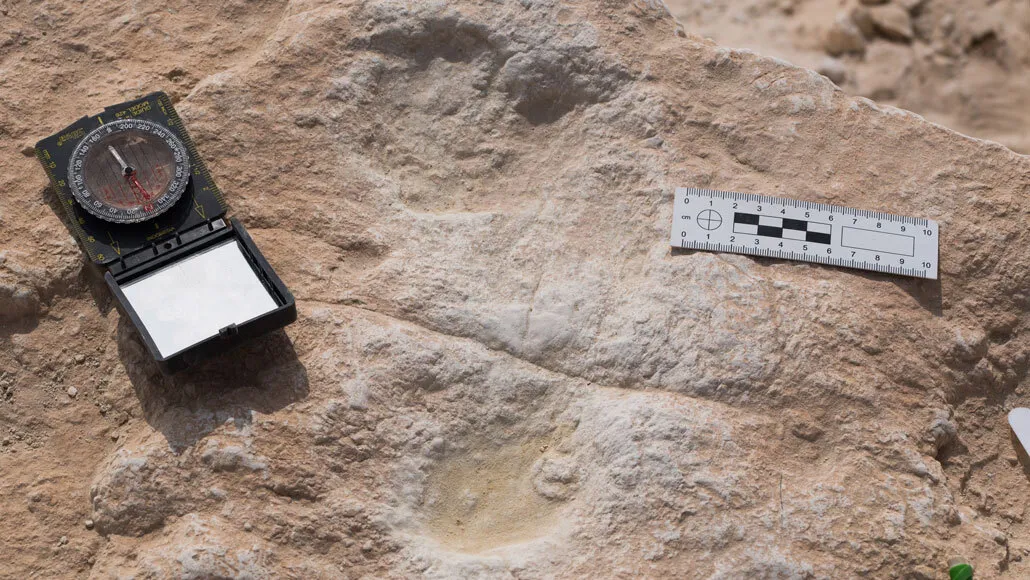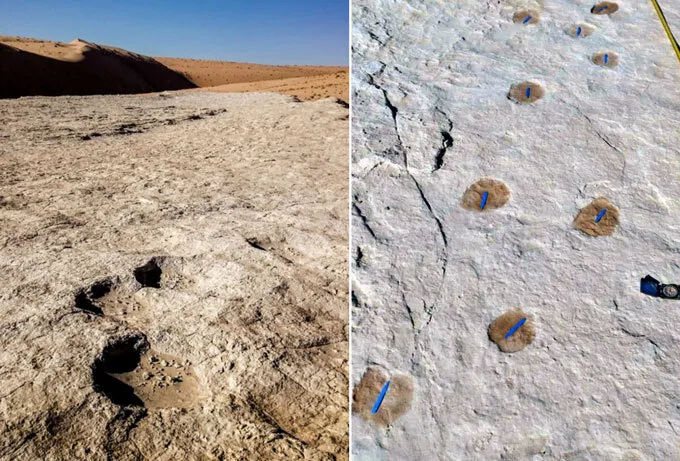Seven footprints may be the oldest evidence of humans on the Arabian Peninsula
The prints were likely made by people stopping to drink at an ancient lake, researchers say

Human footprints, including the one shown here (heel impression at bottom, toes at top), found at an ancient lake suggest that people moved through parts of the Arabian Peninsula more than 100,000 years ago, a study finds.
Klint Janulis








